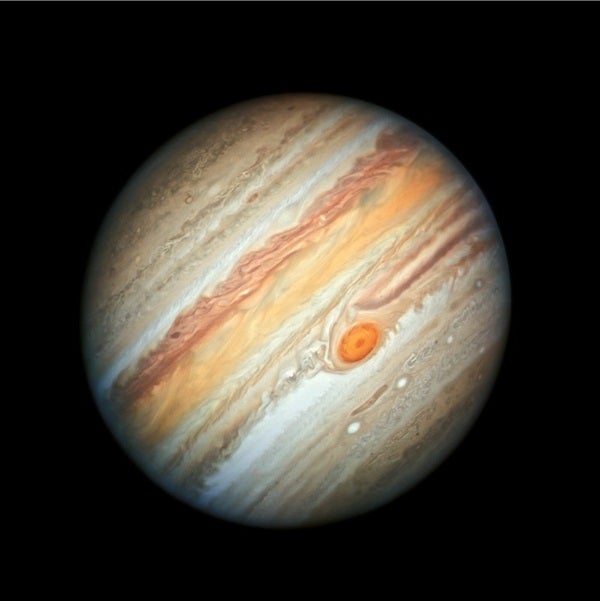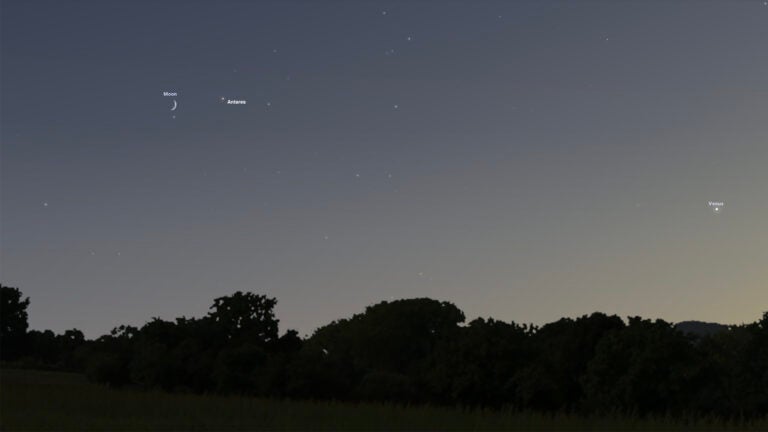
When planetary scientists look to other stars for planets beyond Earth, they don’t often turn up much that resembles our solar system.
Whether it’s because of star size, detection method, or observing time, planetary systems often come out with a lot of worlds on orbits of less than 100 days. What observers don’t see are solar system configurations like our own: rocky planets in the inner realms and gas giants on the outside, all taking months, years, decades, or more than a century to complete an orbit.
But according to a study published today in Nature Communications, our home system may be the norm and not the exception. A group of Italian astronomers looked at the Beta (β) Pictoris Moving Group (BPMG), a group of stars near Earth that includes at least three stars with known giant planets on long orbits around them: 51 Eridani, AF Leporis, and Beta Pictoris. They found indications that many more stars in the group may also host gas giant planets, offering a potential look at solar systems not unlike our own.
Looking for giants
Lead author Raffaele Gratton of INAF-Osservatorio Astronomico di Padova says they’ve surveyed 30 stars in or near the moving group with two different techniques. One, called radial velocity, breaks down a star’s light and looks for “wobbles” associated with an orbiting planet tugging the star back and forth. The other, astrometry, looks at how stars’ positions appear to change relative to the background sky due to unseen companions. Astronomers can search for planets via radial velocity on the ground, but the kind of precision needed for astrometry must be done from space. Most of the data for astrometry came from space-based European Space Agency (ESA) missions called Hipparcos and Gaia.
Gratton’s team found that 20 stars in the moving group had evidence for gas giant planets — those of Jupiter’s mass and higher — in long orbits of between three and 12 times the distance of the Sun and Earth.
Such a high hit rate of possible Jupiter-sized worlds among BPMG stars led Gratton and colleagues to suggest that our solar system could be a normal configuration for stars the size of our Sun.
“Current models for planet formation based on core accretion scenarios predict that many Jupiter-like planets should form, but only a small fraction of stars are known to host similar planets from radial velocity surveys,” Gratton says. “Our work helps to understand this difference between models and observations.”
The trouble with finding our solar system
Finding planets via radial velocity takes a lot of time. And finding planets by watching them pass in front of their star biases planets that orbit in a short period. Trying to image planets directly can only be done for hot, young systems, and astrometry is painstakingly slow and needs maddening precision. In other words, most of our current methods just aren’t good for finding exo-Jupiters. They’re barely good for finding true exo-Earths in 300-plus-day orbits.
The 30 stars in this sample were specifically selected for being around Sun-type stars. While M-dwarf (or red dwarf) stars like Proxima Centauri or TRAPPIST-1 are the most numerous stars in the galaxy, they’re small stars that don’t tend to have a lot of large worlds. Their planets tend to have tight orbits of a few days or a few weeks in Earth time. That’s not helpful if you’re trying to find out about the origin of Earth and its sibling planets, as “the characteristics of the site where the solar system formed are not clear yet,” Gratton says.
Part of the reason we have this kind of gap in knowledge is that “while detection of short-period [hot] Jupiters is relatively easy, detection of Jupiter-like planets with periods of tens of years is still very difficult,” Gratton said.
Twenty stars with evidence of Jupiter-mass planets in long orbits is far from conclusive — especially because the team only looked for radial velocity and astrometrical hits that seemed in line with planets, rather than going to great lengths to confirm them.
An interesting result
Jeff Coughlin, a planetary scientist at the SETI Institute who worked extensively on NASA’s Kepler mission, says the paper is interesting, but the BPMG may not be the best baseline for comparison with the Sun.
“[The BPMG] is a very young group of stars (~25 million years) compared to the ~5 billion years of our Sun,” Coughlin says[AK5] , acknowledging the authors mentioned it in the discussion section of their paper. “But maybe this is crucial for understanding how planetary systems evolve — we know that it is a chaotic process, and the orbits of planets can change dramatically over time, especially when solar systems are young.”
Coughlin calls it an “interesting result,” but cautions that it takes a small sample from a unique group of young stars. The authors of the paper suggest that their hypothesis will be validated by Gaia data in a few years — something Coughlin agrees with “given the extremely large sample size that Gaia provides.”
Gratton says Gaia’s fourth data release (DR4), due in 2025, will have sufficient data to find planets with six- to seven-year orbits around their stars. At that point, Gaia will have been taking 11 years of observations. Kepler, which looked for transiting planets, was ultimately only able to observe for 3.5 years in its first mission and another five years during the K2 mission, which was more limited due to the failure of its reaction wheels. NASA’s Transiting Exoplanet Survey Satellite (TESS) has only been collecting data for five years.
Jessie Christiansen, a Caltech astronomer who works extensively with TESS, has been studying the high occurrence rates of planets slightly smaller than Neptune in close orbits to stars of similar age as the BPMG. She also says the new paper is “super intriguing,” and “could point to a coherent picture of planet loss over the lifetime of planetary systems.” (The Sun likely lost at least one gas giant to migrations of the other four gas giants, according to the Nice model.)
We could soon have our first sense on how rare or common our solar system is. Regardless, the scenario highlights at least one thing: Even with more than 5,500 individual exoplanets discovered to date, we still don’t know all that much about how complete solar systems form and evolve just yet.









